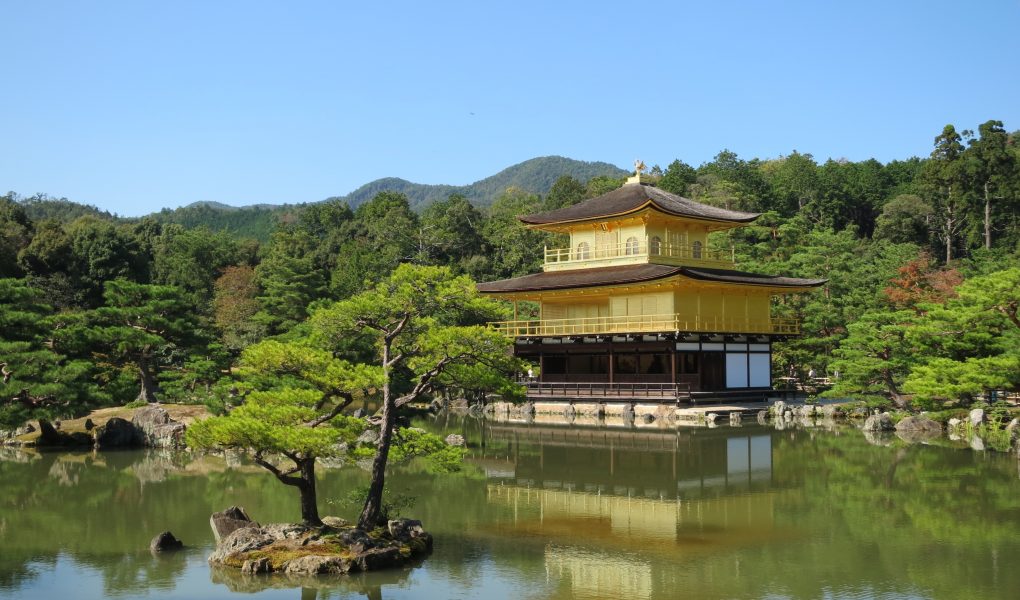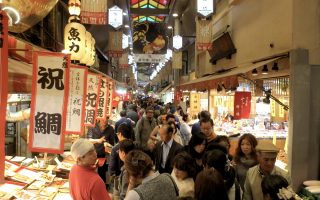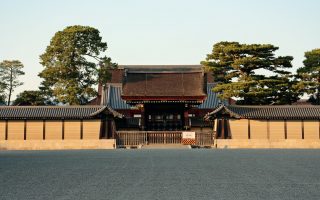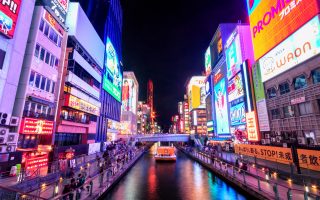Kinkaku-ji, meaning Temple of the Golden Pavilion, is one of the most well known attractions in Kyoto. The three story pavilion has it’s two top floors covered in gold leaf. The building is located in a beautiful zen-style Japanese garden. The complex dates back to the late 1300’s.
The Golden Pavilion is a part of Rokuon-ji (the temples official name) and is a definite must-see when in Kyoto. The gold covered building reflecting on the mirror-like pond and the beautiful garden are a pleasing sights for the eyes. Unfortunately it isn’t exactly one of those hidden gem attractions. This temple attracts crowds like few others. Despite there being no access to the pavilion for visitors this location has managed to impress the entire world it seems. The attention is well deserved – the place is so unique that it has not only been designated a National Historic Site and a National Special Landscape; it is also listed on UNESCO’s world heritage list as one of 17 historic monuments of ancient Tokyo.
History of Kinkaku-ji
The site of Kinkaku-ji was originally the location of villa called Kitayama-dai. The villa was owned by Saionji Kintsune, a local nobleman and important poet. In 1397 the villa was purchased by the Shogun Ashikaga Yoshimitsu. It was Yoshimitsu’s wish that the complex should be transformed to a Zen Buddhist temple after his death. When Yoshimitsu died in 1408, his son took care of his fathers wish.
Kinkaku-ji has been burned down on several occasions over the past 600 years. It has suffered under wars and other destructive events. The latest of those events was as recent as 1950, when a 22 year old young monk suffering from schizophrenia burned the pavilion down. The building was reconstructed in 1955, which is the structure seen today.

Architecture
The pavilion is not original, due to the many destructive events over it’s 600 year life. The current structure from 1955 is believed to be quite close to the original building. However, the historical use of so much gold leaf seems to be disputed. The pavilion is a Shariden, meaning that it is used for housing Buddhist relics.
The building consists of three floors, with each their building style. The first floor, called The Chamber of Dharma Waters, is built in Shinden style. This style is recognized by the white walls and natural, unpainted wood elements. It resembles the style used for palatial and imperial buildings in the Heian period (794-1185) centuries before the temple was first built.
The second floor, called The Tower of Sound Waves (i’m not really sure why), is built in Buke style. This style resembles that of homes for military families. “Buke” means “a martial house” or can refer to a person residing in a martial house hence a Samurai. The second floor contains a Buddha hall and a shrine for Kannon, the goddess of mercy (read more about Kannon in the post about Senso-ji temple).
The third floor is built in a traditional Chinese zen style. Covered in gold both on the inside and outside, this is probably the most majestic floor of the building. We will never know, as the insides of the temple are off-limits for visitors. On top of the roof is a gilded ornamental Phoenix.
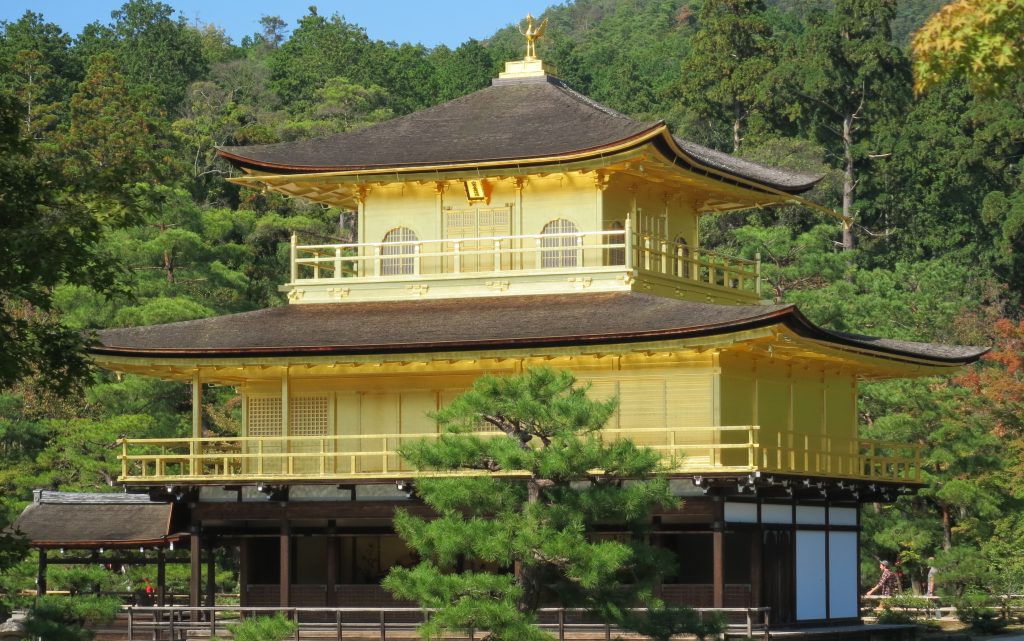
Garden
The garden in which Kinkaku-ji is located, is very beautiful and well worth a stroll. It is centered around a pond, which elegantly reflects the golden pavilion. The garden complex incorporates many zen elements, expressed through the placement of rocks, bridges etc. Notice how the garden is a Shakkei style garden. Shakkei (called “borrowed scenery” in English) is a way to design gardens so they appear to be a part of the surrounding nature. The Shakkei style can be observed by noticing how the garden appears to connect with the forrest and hills around it. You don’t see the boundary of the park – it’s like it is just a natural part of the scenery. The same concept is used in the famous Ritsurin Gardens in Takamatsu.
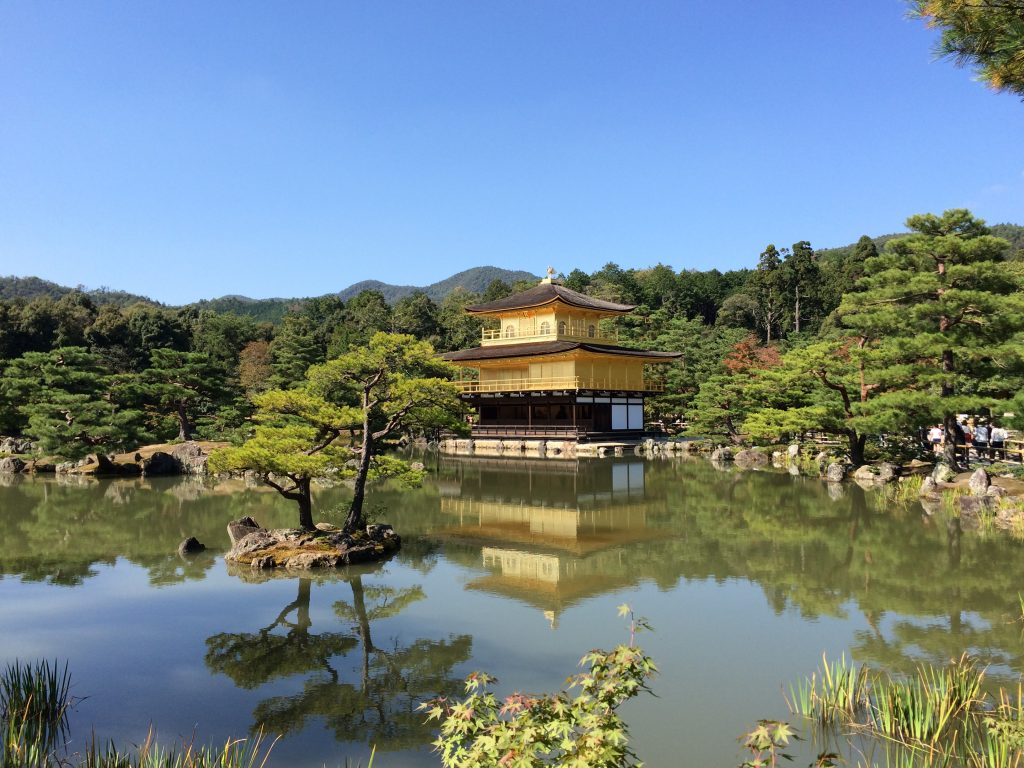
Planning your visit
Entrance to the garden is around ¥500. The pavilion can’t be seen from outside the park, so a ticket is required.
When to go: The garden is beautiful in all seasons. The fall adds some nice autumn colors to some of the trees. The winter brings a beautiful snow cover to the pine trees and roof of the pavilion.
Kinkaku-ji is hugely popular with tourists. Chances are you will have a hard time to get a serene, silent experience on the temple grounds. The best advice I can give is to avoid weekends. Instead come on weekdays, and arrive before the temple grounds open, so you can be the first to enter the area.
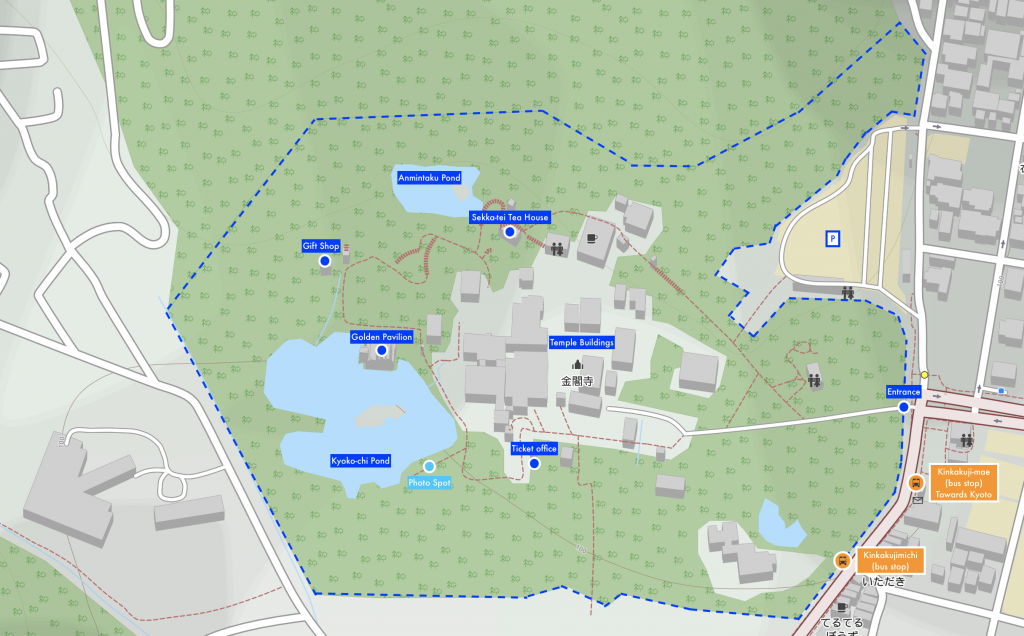
Getting there
Pro tip: Traveling around Kansai? Maybe the Kansai Thru Pass is something for you. The pass is valid for busses, subways and private railways – but not for JR trains.
By bus: from Kyoto station take bus 205 or 101 to Kinkakujimichi Bus Stop (see map above). The ride is about 40 minutes and costs ¥230 ($2/€1.8)
By subway: from Kyoto station take the Karasuma Line to Kitaoji Station (15min). From Kitaoji take bus 204, 205, 101, 102 (10min).
Japan Rail Pass: The above options aren’t covered by the Japan Rail Pass. If you are up for a walk, then it’s about 2.5km/1.6mi (30min) from Emmachi Station. Reach Emmachi station from Kyoto Station by taking the JR San-In Line 3 stops (8min). This train ride is covered by JR Pass.

